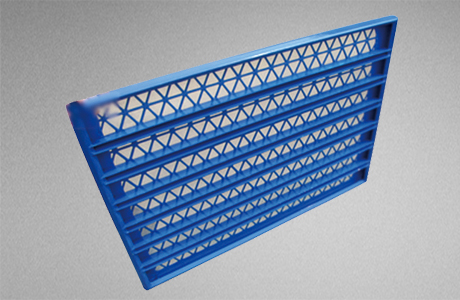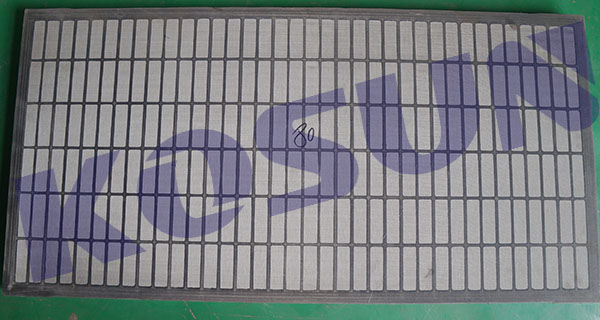Shale Shaker Screen api Size 60 mesh: 60 mesh, 250 Micron, 0.25 API range , 0.0098 Inches.
In an effort to better describe multilayered shaker screens, API issued API RP13. API is used to identify the largest solid that would pass through each screen (or the smallest solid captured by the screen); this is called D100. Solids smaller than D100 will pass though a D100 screen. Each screen manufacturer have its own D100 count (screen openings microns), but the micro court should among the same scope related a a certain API count. For example: D100: 137.5 ~165.0 equaled to API 100.

Shaker screen is the most important parts for shale shaker. Suitable screen size and reliable screen quality can greatly reduce drilling cost. And good design shale shaker can prolong lifetime of shaker screen.
Screen size usually indicated by mesh size or API size. Many clients wonder: what is difference of mesh size and API size? can they convert to each other?
Definition of mesh size:Mesh count is the number of opening per inch in directions perpendicular to each other and parallel to the screen wires. For example, a 40-mesh screen would have 40 openings per inch in one direction and 40 openings per inch in a perpendicular direction. In an effort to eliminate calling the screen a “40 by 40” screen, the common terminology resulted in calling the screen a 40-mesh.

During the 1960’s, the throughput volume was increase by making rectangular openings. If the mesh count was 20 opeings in one direction and 40 openings in a perpendicular direction, the screen would be labeled a 20×40 mesh. The marketing ploy, however, was to label the screen with a letter and then the number 60. This implied to many that the screen was a 60-mesh screen.
Although this was not stated explicitly. Rig crews were happy because the “fine-mesh” screens could handle more flow than a normal square-mesh screen. After rectangular screens became common, shale shaker throughtput was increased again. by mounting one screen on top of another screen instead of using only a single layer, see figure.
This layering created even more of a description problem because the opening were now non-uniform and difficult to describe. In the sketch, one square mesh screen is shown superimposed over another square mesh screen. A variety of opening resulted that cannot be described by a single number. (Editor:Kosun Lily.Wang)
Kosun- China Solids Control Leader&Drilling Waste Management Expert
Tel.: +86 29 87304914
Email: sales2@adkosun.com
Contact person: Lily Wang
Online consulting:
